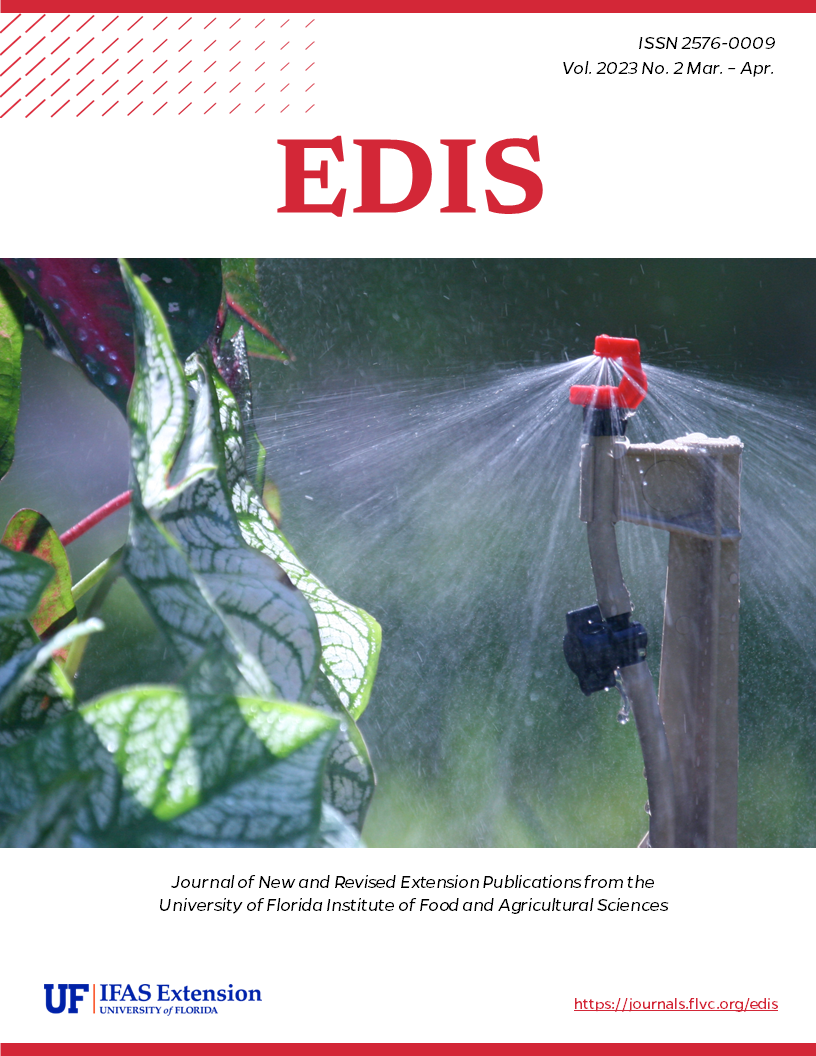Abstract
Close to 19.6 million people live in Florida, and 76.5% of them, or approximately 15 million, live on the coast. Florida’s coasts are attractive despite the increasing risks from sea-level rise and more frequent climatic events such as hurricanes and coastal flooding. At particular risk from these erosive events are Florida’s 825 miles of sandy beaches. Coastal armoring is a physical barrier placed with the intent of protecting structures from storm, surf, and erosion damage. This publication explains how coastal armoring works and the impacts it has on nearby beaches and sea turtle habitat.
References
Bouwer, L. M. 2019. “Observed and Projected Impacts from Extreme Weather Events: Implications for Loss and Damage” in Loss and Damage from Climate Change, edited by R. Mechler, L. Bouwer, T. Schinko, S. Surminski, and J. Linnerooth-Bayer. Climate Risk Management, Policy and Governance. Springer, Cham. https://doi.org/10.1007/978-3-319-72026-5_3
Collins, J. M., C. H. Paxton, T. Wahl, and C. T. Emrich. 2017. “Climate and Weather Extremes.” Florida's Climate: Changes, Variations, and Impacts. Retrieved from https://doi.org/10.17125/fci2017.ch20
Dugan, J. E., D. M. Hubbard, I. F. Rodil, D. L. Revell, and S. Schroeter. 2008. “Ecological Effects of Coastal Armoring on Sandy Beaches.” Marine Ecology 29:160–170. https://doi.org/10.1111/j.1439-0485.2008.00231.x
Eastman, S., and G. Appelson. 2017. Coastal Armoring and Rising Seas Put a Squeeze on Turtles. SWOT Report, vol. 12:12–13.
Florida Administrative Code (2008). 62B- 33.0051: Coastal Armoring and Related Structures. https://www.flrules.org/gateway/ruleno.asp?id=62B-33.0051&Section=0
Florida Department of Environmental Protection. 2020. Strategic Beach Management Plan — Introduction. Retrieved October 13, 2021, from https://floridadep.gov/rcp/beaches-inlets-ports/documents/introduction-strategic-beach-management-plan.
Griggs, G. B. 2005. The Impacts of Coastal Armoring. Shore and Beach 73 (1): 13–22. Retrieved on November 1, 2021, from https://www.researchgate.net/publication/285969581_The_impacts_of_coastal_armoring
Griggs G. B., and B. G. Reguero. 2021. “Coastal Adaptation to Climate Change and Sea-Level Rise.” Water 13 (16): 2151. https://doi.org/10.3390/w13162151
Hill, M. K., M. C. Monroe, T. T. Ankersen, R. R. Carthy, and T. A. Kay. 2019. “Coastal Armoring and Sea Turtles: Beachfront Homeowners’ Opinions and Intent.” Coastal Management 47 (6): 594–610. https://doi.org/10.1080/08920753.2019.1669102
McAneney, J., and R. Crompton. 2013. “What is driving the rising cost of natural disasters?” Trébol, (67):5–17 https://app.mapfre.com/mapfrere/docs/html/revistas/trebol/n67/pdf/Articulo1-en.pdf
Mitchum, G. T. 2011. “Sea Level Changes in the Southeastern United States: Past, Present, and Future.” University of South Florida. Florida Climate Institute and Southeast Climate Consortium. Retrieved October 13, 2021, from https://floridaclimateinstitute.org/images/reports/201108mitchum_sealevel.pdf
Mrosovsky, N. 1983. “Ecology and Nest-Site Selection of Leatherback Turtles (Dermochelys coriacea).” Biological Conservation 26:47–56. https://doi.org/10.1016/0006-3207(83)90047-2
NOAA Office for Coastal Management. 2021. Florida. Retrieved October 13, 2021, from https://coast.noaa.gov/states/florida.html
Pfaller, J. B., C. J. Limpus, and K. A. Bjorndal. 2008. “Nest-Site Selection in Individual Loggerhead Turtles and Consequences for Doomed-Egg Relocation.” Conservation Biology 23 (1): 72–80. https://doi.org/10.1111/j.1523-1739.2008.01055.x
Rizkalla, C. E., and A. Savage. 2011. “Impact of Seawalls on Loggerhead Sea Turtle (Caretta caretta) Nesting and Hatching Success.” Journal of Coastal Research 27 (1): 166–173. https://doi.org/10.2112/JCOASTRES-D-10-00081.1
Schroeder, B. A., and A. E. Mosier. 2000. Between a Rock and a Hard Place: Coastal Armoring and Marine Turtle Nesting Habitat in Florida.” Paper presented at Eighteenth International Sea Turtle Symposium. U.S. Department of Commerce. NOAA Technical Memorandum NMFS-SEFSC-436 290–292. Retrieved October 13, 2021, from http://www.seaturtle.org/PDF/AbreuGroboisFA_2000_ProceedingsoftheEighteenthInternati.pdf
US Army Corps of Engineers. 2017. Nationwide Permit 54 - Living shorelines, effective date: March 19, 2017; Expiration Date: March 14, 2026 (NWP Final Notice, 82 FR 1860), from https://www.swt.usace.army.mil/Portals/41/docs/missions/regulatory/2021%20NWP/NWP-54.pdf?ver=5LdLM2jDQyrn9GykSMxjKw%3d%3d
U.S. Fish and Wildlife Service, Environmental Conservation Online System – Species Reports. Retrieved October 13, 2021, from https://ecos.fws.gov/ecp/report/species-listings-by-tax-group?statusCategory=Listed&groupName=Reptiles
Witherington, B., S. Hirama, and A. Mosier. 2011. “Barriers to Sea Turtle Nesting on Florida (USA) Beaches: Linear Extent and Changes Following Storms.” Journal of Coastal Research 27 (3): 450–458. doi: https://doi.org/10.2112/JCOASTRES-D-09-00146.1
Witherington, B. E., and D. Witherington. 2015. Our Sea Turtles: A Practical Guide for the Atlantic and Gulf, from Canada to Mexico.” Sarasota, FL: Pineapple Press, Inc.

